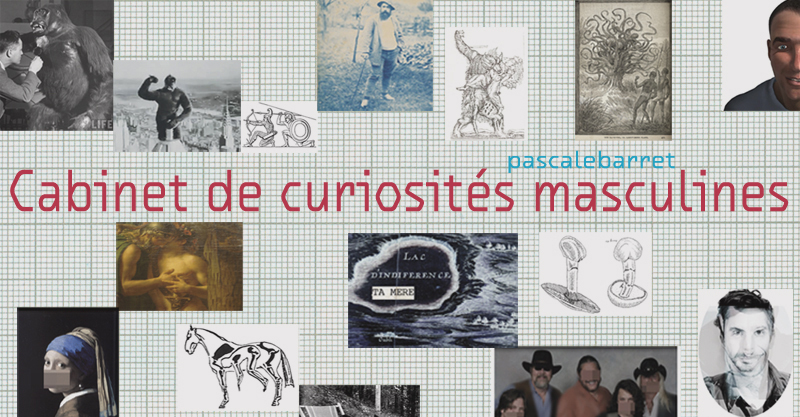
Studio XX launches its 2010-2011 Residency Program by welcoming independent international media artist Pascale Barret from October 25 to December 17, 2010. Pascale’s artistic practice focuses on the theme of gender representation within science-fiction and feminist digital networks – in relation to the writings of Donna Haraway – and examines concepts of identity, cloning and hyper-communication. During her residency, she will continue her research rooted in Second Life avatars, immersive environments, real-time and improvised audio and video streams as well as portable technologies to create Curiosités masculines, consisting of a cabinet – a physical structure that acts as a miniature museum showcasing texts, drawings, Internet images, videos and photographs of human, animal and vegetal mixed realities – and a website – an interface that acts as a forum for reflection and debate toward ideas of gender, identity, scientific mutation and stereotyped appearance.
Pascale Barret is situated between Brussels, Europe and the Internet. After her studies in Architectural Environment Management, she pursued a series of workshops in Fine Arts, Performance and Digital Arts, and obtained a Master’s Degree (Diplôme National Supérieur d’Etude Plastique) in 2008. In 2010, she contributed to the VIRAGE research platform by developing new interfaces and was awarded the Interactive Screen 1.0: Beautiful Lives Scholarship Intensive at the Banff New Media Institute with curator Daniel Canty. Pascale is currently a member of the Interactive Media Art Laboratory (iMAL), a center for digital cultures and technology, and a participant in the Body Intimacy Network, a networked project initiated by Mutin for research into digital bodies. Her work has been exhibited in several European artistic institutions.
“First, there was curiosity. Then Adam and Eve were chased from the Garden of Eden. The evolution of our ever-changing technical world thrusts us into a new realm of creative emancipation. However, this mass expansion has thrown our integrity into question and is creating a conflict of identity. Today’s rapid globalization has prompted me to work in terms of metamorphosis and utopias. Because the human form and technology seem contradictory, the physical body tries to position itself in relation to it. Our own body image clashes and even substitutes itself for representations. Our fascination with new technology constantly tempts us to cross the line from the physical world into other landscapes. This is because the body and mind crave desire. We can be more than a man, woman, or animal in our ephemeral and complex lives. For example, the idea of using Avatars as a simulated medium demonstrate the themes that my work incorporates such as the fleshless body and digital identities. Like 15th century aesthetic preoccupation, I focus my work process on incarnation and disincarnation. However my modern tools are both low and high tech. I find poetic and ludic lines for myself, ourselves, and create virtual, artificial and live representations. They evolve through human nature, common places and déjà vu experiences.”